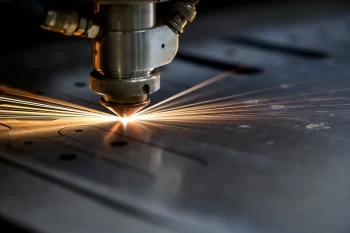
How It Improves Efficiency and Profitability
Precision engineering is a specialised field that involves the manufacturing of components with extremely high levels of accuracy, consistency, and reliability. While the benefits of precision engineering are well-known in many industries, including aerospace, medical devices, and electronics, its impact on the overall efficiency and profitability of manufacturing operations is often overlooked.
Improving Efficiency with Precision Engineering
Precision engineering helps reduce material waste, which can significantly impact a company’s bottom line. By producing components with high precision, manufacturers can minimize the amount of raw materials required to create a product, reducing waste and lowering production costs.
Not only can it reduce waste, but precision engineering helps improve product quality too. This on it’s own can lead to increased customer satisfaction and repeat business. When components are manufactured with high precision machines, they fit together perfectly, function as intended, and are less likely to fail. They are also produced exactly the same as one another. This reduces the number of product returns and warranty claims, improving a company’s reputation and reducing costs associated with repair and replacement.
When components fit together perfectly, assembly time is reduced, and production can be completed more quickly. This allows manufacturers to produce more products in a shorter amount of time, increasing their output and revenue potential without the need for additional staff or materials.
Failure rates for ultra precision machined components are much lower and any issues with those components manufactured with high precision are easier to diagnose, repair, and replace, reducing downtime and maintenance costs. This is particularly important in industries where downtime can be extremely costly, such as the aerospace and medical device industries.
Precision Engineering Process

You can’t just manufacture using precision engineering principles with little thought though, there is a process to follow that ensures the produced results are correct in the first place. Often prototypes will be produced first to ensure the finished components or products work perfectly and as intended.
- Design and Planning: The first step in precision engineering is to design and plan the component or product to be manufactured. This involves creating detailed drawings and specifications that define the required dimensions, tolerances, and surface finishes.
- Material Selection: Once the design is complete, the next step is to select the appropriate material for the component. This may involve selecting a material with the necessary strength, hardness, and other properties required for the specific application.
- Machining: The component is then machined using advanced CNC (computer numerical control) machines, which use computer-controlled cutting tools to remove material from the workpiece. The machining process may include milling, drilling, turning, or grinding operations.
- Quality Control: Throughout the machining process, the component is inspected and measured using advanced metrology equipment, such as coordinate measuring machines (CMMs), to ensure that it meets the required specifications and tolerances.
- Finishing: Once the component is machined, it may undergo additional finishing operations, such as polishing, deburring, or coating, to improve its surface finish and durability.
- Assembly: Finally, the component may be assembled with other components to create a finished product, such as an aircraft engine, medical device, or electronic device.
Throughout the precision engineering process, strict quality control measures are taken to ensure that each component meets the required specifications and tolerances. This may involve using statistical process control techniques, such as Six Sigma, to monitor and improve the manufacturing process and ensure that it is producing components with a high degree of accuracy and consistency.





